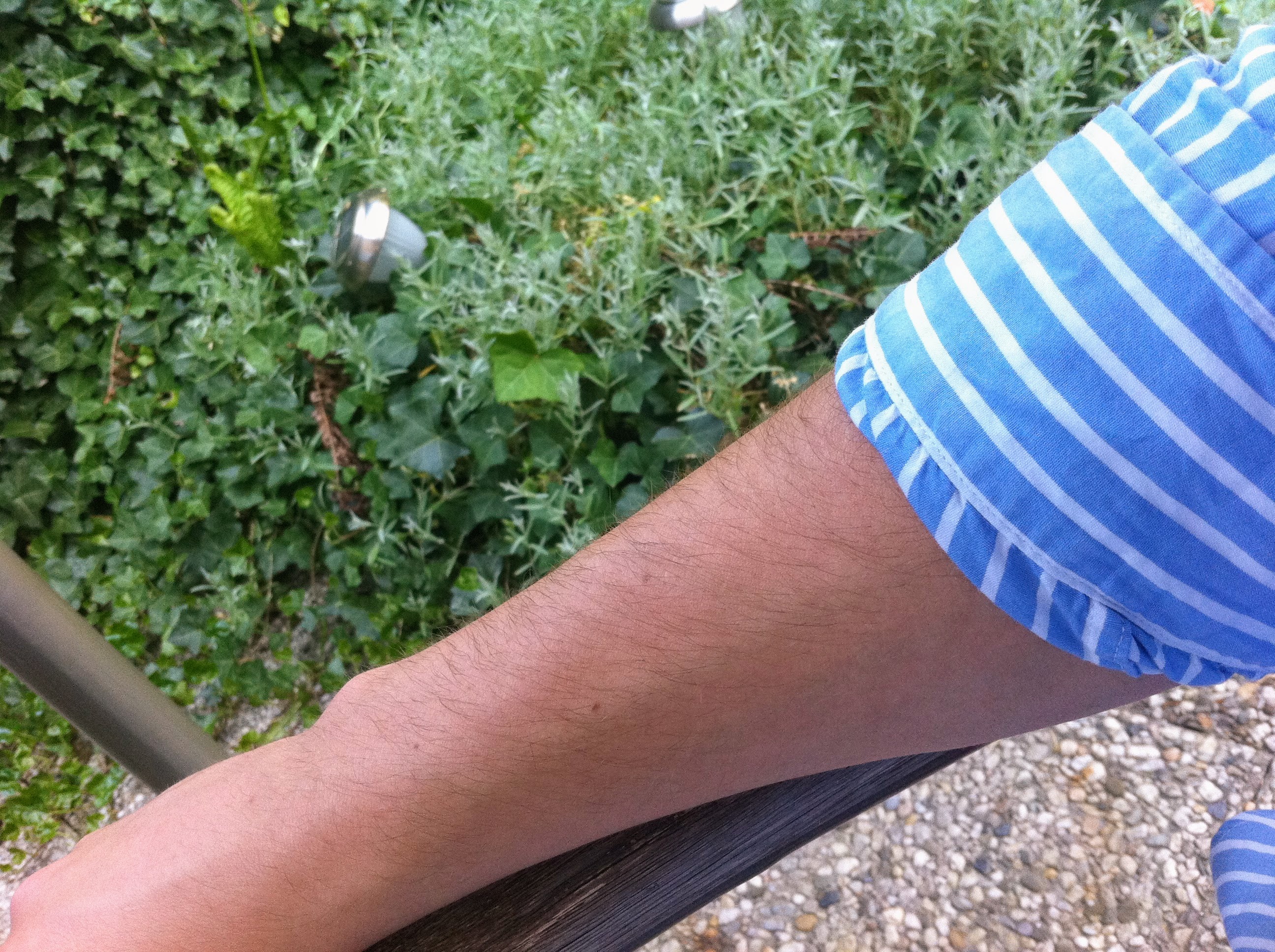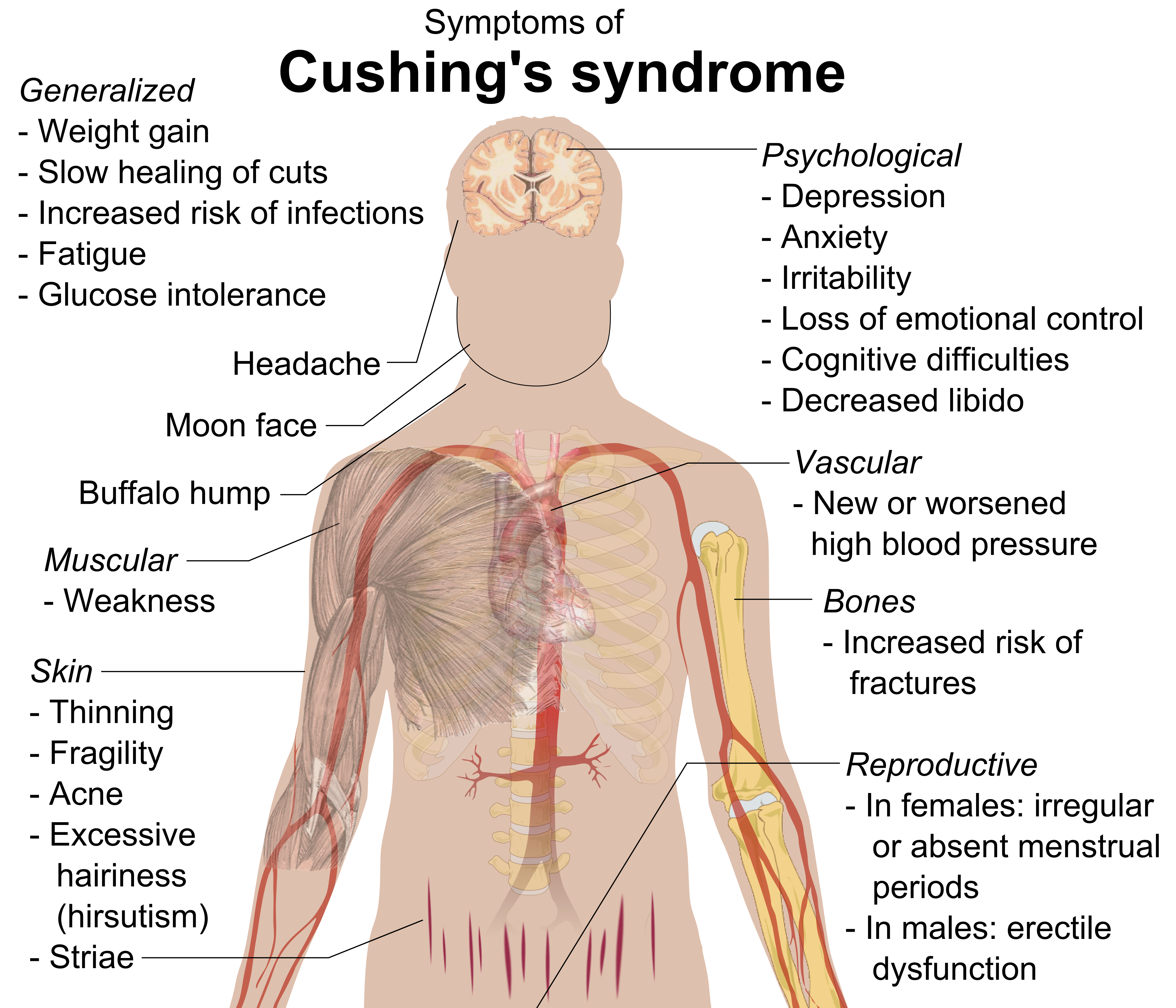|
Vellus
Vellus hair is short, thin, light-colored, and barely noticeable hair that develops on most of a human’s body during childhood. Exceptions include the lips, the back of the ear, the palm of the hand, the sole of the foot, some external genitals, genital areas, the navel, and scar tissue. The density of hair – the number of hair follicles per area of skin – varies from person to person. Each strand of vellus hair is usually less than 2 Millimetre, mm (1/13 inch) long and the Hair follicle, follicle is not connected to a sebaceous gland. Vellus hair is most easily observed on children and adult women, who generally have less terminal hair to obscure it. Vellus hair is not lanugo hair. Lanugo hair is a much thicker type of hair that normally grows only on fetus, fetuses. Vellus hair is differentiated from the more visible terminal hair, terminal or body hair, androgenic hair, which develops only during and after puberty, usually to a greater extent on men than it does on women ... [...More Info...] [...Related Items...] OR: [Wikipedia] [Google] [Baidu] |
Body Hair
Body hair, or androgenic hair, is the terminal hair that develops on the human body during and after puberty. It is differentiated from the head hair and less visible vellus hair, which is much finer and lighter in color. The growth of androgenic hair is related to the level of androgens (often referred to as male hormones) and the density of androgen receptors in the dermal papillae. Both must reach a threshold for the proliferation of hair follicle cells. From childhood onward, regardless of sex, vellus hair covers almost the entire area of the human body. Exceptions include the lips, the backs of the ears, palms of hands, soles of the feet, certain external genital areas, the navel, and scar tissue. The density of hair – i.e. the number of hair follicles per unit area of skin – varies from person to person. In many cases, areas on the human body that contain vellus hair will begin to produce darker and thicker body hair during puberty, such as the first gr ... [...More Info...] [...Related Items...] OR: [Wikipedia] [Google] [Baidu] |
Terminal Hair
In humans, terminal hair is a variant of hair that is thick and long such as what grows on the scalp, as compared with vellus hair, colloquially known as peach fuzz, growing elsewhere.Marks, James G; Miller, Jeffery (2006)''Lookingbill and Marks' Principles of Dermatology''(4th ed.), Elsevier Inc., p. 11. During puberty, the increase in androgenic hormone levels causes vellus hair to be replaced with terminal hair in certain parts of the human body.Hiort, O. "Androgens and Puberty". ''Best Practice & Research Clinical Endocrinology & Metabolism'', Vol. 16, No. 1, pp. 31–41. These parts will have different levels of sensitivity to androgens, primarily of the testosterone family.Neal, Matthew; Lauren M. Sompayrac''How the Endocrine System Works'' Blackwell Publishing, 2001, p. 75. The pubic area is particularly sensitive to such hormones, as are the armpits which will develop axillary hair.Randall, Valerie A.; Nigel A. Hibberts, M. Julie Thornton, Kazuto Hamada, Alison E. M ... [...More Info...] [...Related Items...] OR: [Wikipedia] [Google] [Baidu] |
Frontal Fibrosing Alopecia
Frontal fibrosing alopecia is the frontotemporal hairline recession and eyebrow loss in postmenopausal women that is associated with perifollicular erythema, especially along the hairline.Freedberg, et al. (2003). ''Fitzpatrick's Dermatology in General Medicine''. (6th ed.). McGraw-Hill. . It is considered to be a clinical variant of lichen planopilaris. Presentation There is loss of both terminal and vellus hairs that occurs in a bandlike pattern on the frontotemporal scalp. It is a scarring alopecia that has been associated with facial papules, glabellar red dots, a loss of eyebrows, and prominent venous vasculature in the forehead. Facial hyperpigmentation may occur in dark-skinned patients if association with lichen planus pigmentosus is present. Associations Frontal fibrosing alopecia has been most often reported in post-menopausal women with higher levels of affluence and a negative smoking history. Autoimmune disease is found in 30% of patients. Pathogenesis ... [...More Info...] [...Related Items...] OR: [Wikipedia] [Google] [Baidu] |
Hand
A hand is a prehensile, multi-fingered appendage located at the end of the forearm or forelimb of primates such as humans, chimpanzees, monkeys, and lemurs. A few other vertebrates such as the koala (which has two opposable thumbs on each "hand" and fingerprints extremely similar to human fingerprints) are often described as having "hands" instead of paws on their front limbs. The raccoon is usually described as having "hands" though opposable thumbs are lacking. Some evolutionary anatomists use the term ''hand'' to refer to the appendage of digits on the forelimb more generally—for example, in the context of whether the three digits of the bird hand involved the same homologous loss of two digits as in the dinosaur hand. The human hand usually has five digits: four fingers plus one thumb; these are often referred to collectively as five fingers, however, whereby the thumb is included as one of the fingers. It has 27 bones, not including the sesamoid bone, the number ... [...More Info...] [...Related Items...] OR: [Wikipedia] [Google] [Baidu] |
Peach
The peach (''Prunus persica'') is a deciduous tree first domesticated and cultivated in Zhejiang province of Eastern China. It bears edible juicy fruits with various characteristics, most called peaches and others (the glossy-skinned, non-fuzzy varieties), nectarines. The specific name ''persica'' refers to its widespread cultivation in Persia (modern-day Iran), from where it was transplanted to Europe. It belongs to the genus '' Prunus'', which includes the cherry, apricot, almond, and plum, in the rose family. The peach is classified with the almond in the subgenus '' Amygdalus'', distinguished from the other subgenera by the corrugated seed shell ( endocarp). Due to their close relatedness, the kernel of a peach stone tastes remarkably similar to almond, and peach stones are often used to make a cheap version of marzipan, known as persipan. Peaches and nectarines are the same species, though they are regarded commercially as different fruits. The skin of nectarine ... [...More Info...] [...Related Items...] OR: [Wikipedia] [Google] [Baidu] |
Trichostasis Spinulosa
Trichostasis spinulosa is a common but rarely diagnosed disorder of the hair follicles that clinically gives the impression of blackheads, but the follicles are filled with funnel-shaped, horny plugs that are bundles of vellus hairs.James, William; Berger, Timothy; Elston, Dirk (2005). ''Andrews' Diseases of the Skin: Clinical Dermatology''. (10th ed.). Saunders. . Diagnosis Standard skin surface biopsy (SSSB) is a noninvasive method used for diagnosis. Treatment See also * List of cutaneous conditions Many skin conditions affect the human integumentary system—the organ system covering the entire surface of the body and composed of skin, hair, nails, and related muscle and glands. The major function of this system is as a barrier agai ... References Conditions of the skin appendages {{skin-appendage-stub ... [...More Info...] [...Related Items...] OR: [Wikipedia] [Google] [Baidu] |
Hirsutism
Hirsutism is excessive body hair on parts of the body where hair is normally absent or minimal. The word is from early 17th century: from Latin ''hirsutus'' meaning "hairy". It usually refers to a "male" pattern of hair growth in a female that may be a sign of a more serious medical condition, especially if it develops well after puberty. Cultural stigma against hirsutism can cause much psychological distress and social difficulty. Discrimination based on facial hirsutism often leads to the avoidance of social situations and to symptoms of anxiety and depression. Hirsutism is usually the result of an underlying endocrine imbalance, which may be adrenal, ovarian, or central. It can be caused by increased levels of androgen hormones. The amount and location of the hair is measured by a Ferriman-Gallwey score. It is different from hypertrichosis, which is excessive hair growth anywhere on the body. Treatments may include certain birth control pills, antiandrogens, or insulin ... [...More Info...] [...Related Items...] OR: [Wikipedia] [Google] [Baidu] |
Male Pattern Baldness
Pattern hair loss (also known as androgenetic alopecia (AGA)) is a hair loss condition that primarily affects the top and front of the scalp. In male-pattern hair loss (MPHL), the hair loss typically presents itself as either a receding front hairline, loss of hair on the crown (vertex) of the scalp, or a combination of both. Female-pattern hair loss (FPHL) typically presents as a diffuse thinning of the hair across the entire scalp. Male pattern hair loss seems to be due to a combination of oxidative stress, the microbiome of the scalp, genetics, and circulating androgens; particularly dihydrotestosterone (DHT). Men with early onset androgenic alopecia (before the age of 35) have been deemed as the male phenotypic equivalent for polycystic ovary syndrome (PCOS). As an early clinical expression of insulin resistance and metabolic syndrome, AGA is related to being an increased risk factor for cardiovascular diseases, glucose metabolism disorders, type 2 diabetes, and enlargement ... [...More Info...] [...Related Items...] OR: [Wikipedia] [Google] [Baidu] |
Anorexia Nervosa
Anorexia nervosa, often referred to simply as anorexia, is an eating disorder characterized by underweight, low weight, Calorie restriction, food restriction, body image disturbance, fear of gaining weight, and an overpowering desire to be thin. ''Anorexia'' is a term of Greek origin: ''an-'' (ἀν-, prefix denoting negation) and ''orexis'' (ὄρεξις, "appetite"), translating literally to "a loss of appetite"; the adjective ''nervosa'' indicating the functional and non-organic nature of the disorder. ''Anorexia nervosa'' was coined by Gull in 1873 but, despite literal translation, the feeling of hunger is frequently present and the pathological control of this instinct is a source of satisfaction for the patients. Individuals with anorexia nervosa have a fear of being overweight or being seen as such, although they are in fact underweight. The DSM-5 describes this perceptual symptom as "disturbance in the way in which one's body weight or shape is experienced". In resea ... [...More Info...] [...Related Items...] OR: [Wikipedia] [Google] [Baidu] |
Cushing's Syndrome
Cushing's syndrome is a collection of signs and symptoms due to prolonged exposure to glucocorticoids such as cortisol. Signs and symptoms may include high blood pressure, abdominal obesity but with thin arms and legs, reddish stretch marks, a round red face, a fat lump between the shoulders, weak muscles, weak bones, acne, and fragile skin that heals poorly. Women may have more hair and irregular menstruation. Occasionally there may be changes in mood, headaches, and a chronic feeling of tiredness. Cushing's syndrome is caused by either excessive cortisol-like medication, such as prednisone, or a tumor that either produces or results in the production of excessive cortisol by the adrenal glands. Cases due to a pituitary adenoma are known as Cushing's disease, which is the second most common cause of Cushing's syndrome after medication. A number of other tumors, often referred to as ectopic due to their placement outside the pituitary, may also cause Cushing's. Some ... [...More Info...] [...Related Items...] OR: [Wikipedia] [Google] [Baidu] |
Cortisol
Cortisol is a steroid hormone, in the glucocorticoid class of hormones. When used as a medication, it is known as hydrocortisone. It is produced in many animals, mainly by the '' zona fasciculata'' of the adrenal cortex in the adrenal gland. It is produced in other tissues in lower quantities. It is released with a diurnal cycle and its release is increased in response to stress and low blood-glucose concentration. It functions to increase blood sugar through gluconeogenesis, to suppress the immune system, and to aid in the metabolism of fat, protein, and carbohydrates. It also decreases bone formation. Many of these functions are carried out by cortisol binding to glucocorticoid or mineralocorticoid receptors inside the cell, which then bind to DNA to impact gene expression. Health effects Metabolic response Metabolism of glucose In general, cortisol stimulates gluconeogenesis (the synthesis of 'new' glucose from non-carbohydrate sources, which occurs mainl ... [...More Info...] [...Related Items...] OR: [Wikipedia] [Google] [Baidu] |
Perspiration
Perspiration, also known as sweating, is the production of fluids secreted by the sweat glands in the skin of mammals. Two types of sweat glands can be found in humans: eccrine glands and apocrine glands. The eccrine sweat glands are distributed over much of the body and are responsible for secreting the watery, brackish sweat most often triggered by excessive body temperature. The apocrine sweat glands are restricted to the armpits and a few other areas of the body and produce an odorless, oily, opaque secretion which then gains its characteristic odor from bacterial decomposition. In humans, sweating is primarily a means of thermoregulation, which is achieved by the water-rich secretion of the eccrine glands. Maximum sweat rates of an adult can be up to 2–4 liters per hour or 10–14 liters per day (10–15 g/min·m2), but is less in children prior to puberty. Evaporation of sweat from the skin surface has a cooling effect due to evaporative cooling. Hence, in hot weat ... [...More Info...] [...Related Items...] OR: [Wikipedia] [Google] [Baidu] |




.jpg)


